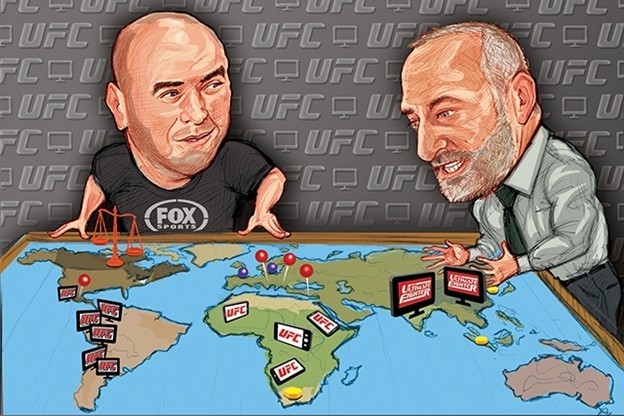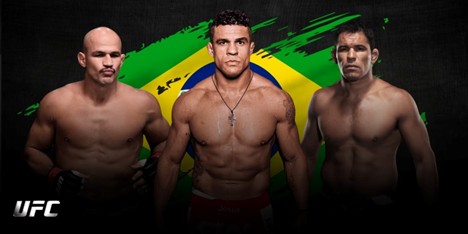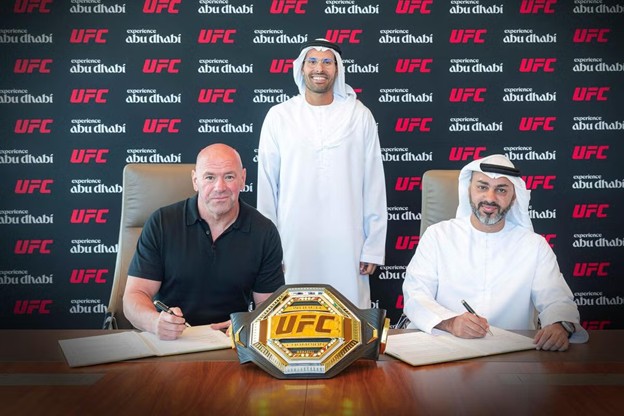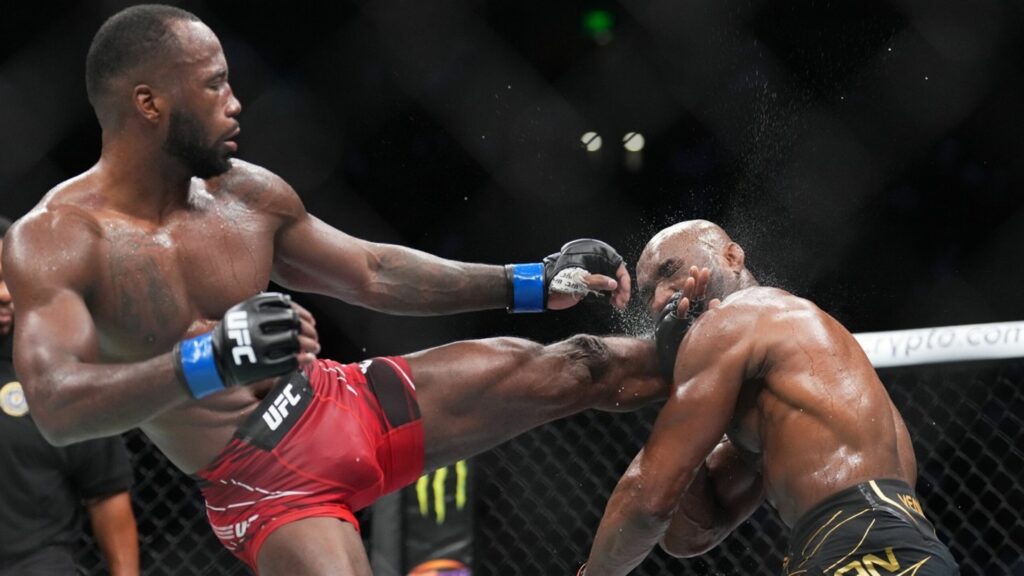
When the UFC started back in 1993, nobody could have predicted it would turn into a global powerhouse. What began as a gritty tournament in Denver has now become a multi-billion-dollar sports brand watched by millions across continents. From Brazil’s passionate fight culture to the UK’s booming arenas, Abu Dhabi’s state-backed mega cards, and China’s rapidly growing interest, the UFC has mastered the art of planting its flag in new markets.
But how exactly did the UFC break into these countries? And where is the promotion headed next? Let’s take a closer look at how Dana White and company turned MMA from a niche American experiment into a global empire.
Brazil: The Heartbeat of MMA

If there’s one place where the UFC always had a natural home, it’s Brazil. The country is practically the birthplace of modern MMA. Brazilian Jiu-Jitsu (BJJ) was the weapon that put the Gracie family on the map in the early UFC tournaments. Royce Gracie’s dominance in the 1990s not only proved the effectiveness of BJJ but also gave Brazil a sense of ownership over the sport.
When the UFC started to expand internationally, Brazil was a no-brainer. But it wasn’t just about history—it was about timing. The early 2010s saw a golden era for Brazilian champions: Anderson Silva, José Aldo, Junior dos Santos, Lyoto Machida, and later Amanda Nunes. Each of them carried national pride and gave fans a reason to rally behind the UFC.
The promotion leaned into this momentum by hosting massive events in Rio de Janeiro, São Paulo, and other cities. UFC 134 in 2011 (Silva vs. Okami) was a turning point. Over 14,000 fans packed HSBC Arena, and the energy made it clear—Brazil wasn’t just a fight country, it was the fight country.
Even today, cards in Brazil feel special. The crowds chant, boo, and celebrate with unmatched passion. Fighters talk about the energy as something unique—like stepping into a gladiator pit. For the UFC, Brazil is not just a market, it’s part of its DNA.
United Kingdom: Building a European Stronghold
Crossing the Atlantic wasn’t easy, but the UK gave the UFC its first true European foothold. In the early 2000s, MMA was barely on the radar in Britain. But the UFC saw potential. The UK already had a strong boxing tradition, and combat sports fans were hungry for something fresh.
The game-changer came in 2007 with UFC 70 in Manchester. The event featured Mirko Cro Cop, Gabriel Gonzaga, and a scrappy young Brit named Michael Bisping. That night, Gonzaga shocked the world with a head-kick knockout, and the UK fans showed the UFC they were ready for more.
The UFC doubled down, hosting cards in London’s O2 Arena, Manchester, and other cities. And then came the ultimate payoff: Michael Bisping’s Cinderella story. When “The Count” knocked out Luke Rockhold in 2016 to become the first British UFC champion, the UK market exploded.
Today, the UK is one of the UFC’s strongest territories. Fighters like Leon Edwards, Tom Aspinall, and Paddy Pimblett keep the fire alive. UFC London cards sell out instantly, and the promotion treats them almost like mini pay-per-views.
What’s more, the UK opened the door to the rest of Europe. From there, the UFC branched into countries like Sweden, Ireland, Poland, and France, with Conor McGregor becoming the biggest star the sport has ever seen.
Abu Dhabi: The UFC’s Middle Eastern Hub

If Brazil and the UK were about culture and passion, Abu Dhabi was about strategy and partnership. The Middle East didn’t have a long history with MMA, but it had ambition—and deep pockets.
In 2010, the UFC signed a groundbreaking deal with Flash Entertainment, a company owned by the Abu Dhabi government. This was more than just a business move; it was a long-term investment in making Abu Dhabi the UFC’s Middle Eastern capital.
The partnership paid off. UFC 112 in 2010 (Silva vs. Maia, Penn vs. Edgar) was the first-ever event held in the region. But things went into overdrive when the COVID-19 pandemic hit. With the rest of the world shut down, Abu Dhabi stepped up and created Fight Island on Yas Island.
Fight Island became a global talking point, not just in MMA but in mainstream sports. It allowed the UFC to keep running events safely when other sports were on pause. For Abu Dhabi, it was a branding masterstroke—turning the city into a world-class sports destination.
Even after the pandemic, the UFC has made Abu Dhabi a permanent stop. Every October, the promotion hosts a stacked card as part of its deal with the Department of Culture and Tourism. Big names like Khabib Nurmagomedov, Islam Makhachev, and Khamzat Chimaev have all headlined there, cementing its importance.
For the UFC, Abu Dhabi isn’t just a market—it’s a strategic hub connecting Europe, Asia, and Africa.
China: Cracking the Asian Market
Asia has always been tricky for the UFC. Japan already had PRIDE, and other countries had strong local promotions. But China was different: massive population, growing sports culture, and government interest in promoting health and fitness.
The UFC started small with events in Macau, but its breakthrough came with the Performance Institute (PI) in Shanghai, launched in 2019. This $13 million facility wasn’t just about training—it was about scouting and developing local talent.
And it worked. Fighters like Zhang Weili became instant stars. When Zhang knocked out Jessica Andrade in 2019 to become China’s first UFC champion, it created a ripple effect. Millions of Chinese fans tuned in, and suddenly MMA had a local hero to cheer for.
The UFC also made smart moves in broadcasting, partnering with PPTV and later Tencent to reach millions of households. Slowly but surely, MMA started to compete with basketball and soccer for attention in China’s sports landscape.
China remains a long-term project for the UFC, but with its PI and growing talent pool, the foundation has been laid.

Established & Emerging Markets
Canada: The GSP Era and Its Aftermath
Canada was once the UFC’s crown jewel outside the United States. During Georges St-Pierre’s peak, arenas in Montreal and Toronto sold out instantly, with UFC 129 drawing over 55,000 fans. Since GSP’s retirement, the scene has cooled. Loyal fans remain, but Canada needs a new homegrown superstar to reignite the spark.
Mexico: The New Fight Capital in Latin America
Mexico’s boxing roots have merged with MMA, producing Brandon Moreno, Alexa Grasso, and Yair Rodríguez. The UFC Performance Institute in Mexico City cements the promotion’s investment in the region. With champions inspiring young fighters, Mexico is rapidly becoming the “next Brazil” of MMA.
Australia & New Zealand: Oceania Rising
Once a gamble, Oceania is now one of UFC’s hottest markets. Stars like Israel Adesanya, Alexander Volkanovski, and Tai Tuivasa brought global attention, with UFC 243 in Melbourne pulling in a record-breaking crowd. The challenge will be sustaining momentum after the current wave of champions, but the fanbase is here to stay.
Eastern Europe: Passionate & Growing
With fighters like Jan Błachowicz, Jiri Procházka, and Mateusz Gamrot, Eastern Europe has become a stronghold for MMA talent. Poland and the Czech Republic have hosted major cards with huge local support. While Russia’s political climate complicates expansion, Eastern Europe as a whole remains one of UFC’s fastest-growing regions.
Untapped Frontiers & Future Growth
Africa: The Untapped Giant
Despite producing champions like Kamaru Usman, Israel Adesanya, and Francis Ngannou, UFC has never hosted an event in Africa. Nigeria and South Africa are the most likely starting points. Infrastructure and political challenges remain, but UFC Africa would be a landmark event and could inspire the next generation of fighters.
India: The Sleeping Giant
Home to 1.4 billion people, India represents UFC’s biggest long-term opportunity. While the UFC has tested localized broadcasts and signed Indian fighters, the market hasn’t exploded yet. The right breakout star, combined with grassroots training and promotion, could unlock an audience rivaling any other region.
Deeper Eastern Europe Push
While UFC has already tested Poland and the Czech Republic, there’s room for further expansion into markets like Serbia, Croatia, and other Balkan nations with rich combat sports traditions. Fighters from these regions are gaining traction, and localized events could accelerate growth.
Challenges of UFC’s Global Expansion
For all the success stories, the UFC’s global march hasn’t been without hurdles. Taking MMA to new markets is never just about selling tickets—it’s about navigating culture, politics, and business realities.
- Regulatory & Legal Barriers
In some countries, MMA is still viewed as too violent or unsafe. Local commissions and governments often impose restrictions that slow down UFC’s entry. For example, France only legalized MMA in 2020 after years of heated debate. That delay cost the UFC nearly a decade of potential growth in a major European market. - Competition From Local Promotions
While the UFC is the global leader, it’s not always the first mover. Promotions like ONE Championship in Asia or KSW in Poland have deep local roots and loyal fan bases. The UFC often has to compete not just on fight cards but on cultural connection—something local organizations naturally excel at. - Building Local Stars
Markets thrive when homegrown fighters rise to the top. Brazil had Anderson Silva and José Aldo. Ireland had Conor McGregor. Mexico has Brandon Moreno. But not every region produces breakout stars on cue. Without local heroes, it’s harder for UFC to keep casual fans engaged long-term. - Economic & Infrastructure Challenges
Hosting UFC events requires arenas, broadcast deals, and fans with disposable income. Emerging markets may love MMA but lack the infrastructure or economic conditions to consistently support big shows. - Cultural Adaptation
Finally, the UFC’s U.S.-centric style doesn’t always translate perfectly abroad. From marketing campaigns to commentary choices, the promotion must tailor its approach to connect authentically with local fans—something they’re still learning in newer regions like China and the Middle East.
What UFC Needs to Do Next to Succeed Globally
Looking ahead, the UFC’s international journey is far from over. If the promotion wants to lock in its dominance as the undisputed global leader in MMA, a few strategic moves stand out:
- Invest in Local Fighters & Training Facilities
The Performance Institutes in Shanghai and Mexico City were game-changers. Replicating this model in Africa, the Middle East, and Eastern Europe could build pipelines of new stars while showing commitment to local talent. - Partner With Local Broadcasters & Streaming Platforms
Not every country consumes sports the same way. In some markets, pay-per-view isn’t viable. Flexible deals with local TV and streaming platforms will be key to reaching wider audiences. - Cultural Tailoring of Events
Fans don’t just want a UFC show dropped into their country—they want events that reflect their culture. From walkout music to commentary in local languages, customization will help the UFC connect more deeply. - Strengthen Fan Engagement Outside the Arena
Social media, reality shows, and behind-the-scenes content have boosted UFC’s U.S. fanbase. Expanding this type of content globally—localized, subtitled, and culturally relevant—will help turn casual viewers into diehard fans. - Balance Global Growth With Fighter Welfare
As expansion accelerates, so do travel schedules and fight demands. The UFC will need to ensure fighter health, fair pay debates, and unionization talks don’t become cracks in its foundation.
If the UFC can navigate these next steps, the promotion won’t just be a U.S. export—it will become a truly global sports powerhouse, rivaling football, basketball, and boxing on every continent.
Final Thoughts: A Truly Global Octagon
Twenty years ago, MMA was banned in multiple U.S. states and barely recognized internationally. Today, the UFC sells out arenas in London, São Paulo, Shanghai, and Abu Dhabi. The sport’s expansion hasn’t just grown UFC’s bottom line — it’s created opportunities for fighters around the world, united fans across cultures, and turned MMA into one of the fastest-growing sports on the planet.
And the story is still unfolding. Africa, India, and other regions are waiting for their turn under the bright lights. When that happens, the UFC won’t just be a global brand — it’ll be a truly universal sport.

Jake Simmons is a combat sports writer and UFC betting analyst. He breaks down fights with a sharp eye for strategy and provides insights on the business side of MMA.



Where do you think UFC is going to blow up next?